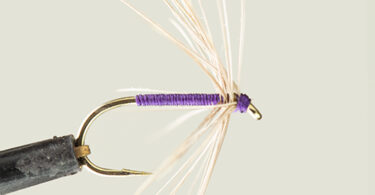
Beautiful river Aire Grayling that took a Klinkhammer in fast water. ©Joel Barrow 2011
As the new year springs forth, new buds on trees, snowdrops, fresh sunny days after days of darkness, the river starts to call us back. The scent of wild garlic already in the air, the sight of olives drifting from the water surface then looking and seeing a fish rise, the excitement starts to build….
The Approach of the new fishing season is an exciting time, by the end of February we’ve more than likely had a touch of cabin fever. Before we head for the water its worth having a good look over our tackle and through our fly collections, weeding out the flies that didn’t work and sitting at the fly bench weaving hope into new creations.
Jonathan Hoyle explains below his system for selecting flies for the season:
This is a problem that affects every fly fisherman: what flies to carry and how many?
You always seem to end up with box after box of flies filling every pocket of your vest and when you spot a fish you fumble through the boxes deliberating which fly to tie by which time the fish has had it fill and slunk back off. I had this problem having no less than 5 boxes of flies to call upon at any time. However, after a while you seem to find that you get a handful of ‘go to’ flies and the rest just seem to sit there making the box look full but it feels good as you think one day those flies will come in useful. They don’t!
I decided that for this coming season I would be ruthless and start again with the flies I carry with me. The nymph box was fairly easy just carry the ‘go to’ patterns as I had built a collection up that consistently caught well. The daunting prospect was the dry fly box where do you start with that! Yes each fly may bring the odd rise but what will take fish consistently when the hatch can vary from river to river, season to season?My method is not to match the hatch but to match the rise. This way you can cover a multitude of insects but with only a simple selection of flies making fly choice easier just vary the size. All you need to do is carefully watch the rise form of the fish in front of you and employ the following table:

For each of the fly choice above I will only carry one body colour of each and vary the wing post colour for different light conditions. CDC is the preferred option for slower glides and tails and the more buoyant hackled flies for the streamy runs although if treated right CDC can be used all the time making the box even simpler. The key I feel is not in the exact body colour match but by the size and form trigger it provides. Matching the rise gives the fish the trigger to what it is feeding on regardless of an exact species specific pattern. The most specific you will need to get is size of fly.
Most importantly it saves the need to carry box after box of flies I’ve gone from 5 to 2!




